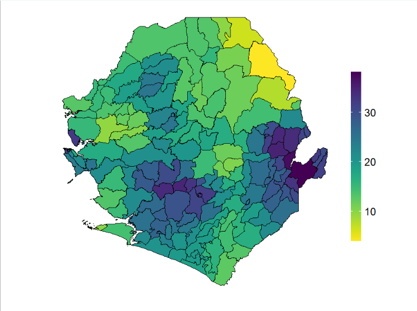Track20 has monitored contraceptive use for the FP2020 global initiative since 2012. Collaborating with the United Nations Population Division and the University of Massachusetts, we have developed the Family Planning Estimation Tool (FPET). FPET is a Bayesian model which is used annually by data experts in Ministries of Health around the globe to estimate contraceptive use for the FP2020 annual report. The model uses both surveys and service statistics. While FPET is most often used to create national estimates for family planning, it can create the same estimates subnationally- this is where Small Area Estimates (SAE) come in.

Small Area Estimates are estimates derived from surveys that are for smaller sub-groups than for which the survey was designed. For example, a Demographic Health Survey (DHS), is a nationally represented survey and generally powered to produce estimates at one administrative level lower than national. SAE allows us to estimates at lower administrative levels.
SAE are wanted because decisions are being made at lower administrative levels. Most countries now have service statistics at these low levels and would like survey estimates at the same level to use for benchmarking, which can be done using FPET.
Track20 creates small area estimates using publicly available data from the DHS and open source software R and QGIS. DHS collects data from “clusters” of households whose offset GPS coordinates are available to data users. For each cluster, we calculate prevalence of a variable. Then, we use a kernel estimator technique to create a smoothed surface for the whole country. We combine with small area estimates of population produced by the University of Southampton to calculate number of users. We aggregate the total number of users and the total number of women for each administrative unit and with those numbers calculate prevalence.
SAE can be used to calculate the inputs for FPET: modern contraceptive use, traditional contraceptive use, and unmet need for married and unmarried women. The next step is for data users in a country to transform service statistics into Estimated Modern Users (EMU) using Track20's SStoEMU excel tool. This tool takes into account the couples’ years of protection of each contraceptive commodity or visit plus adjusts for long term methods used over several years and lack of information from the private sector. EMUs and SAE are then inputted into FPET annually to estimate modern contraceptive use and other indicators. For an example of Track20's SAE work in Uganda, download the PowerPoint below:
Small Area Estimates in Uganda